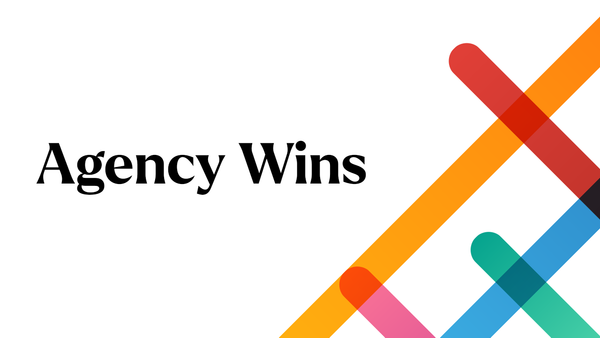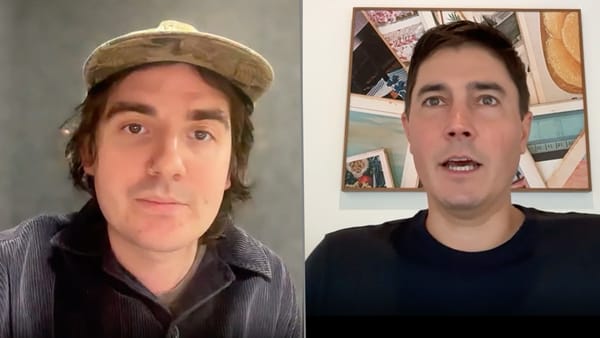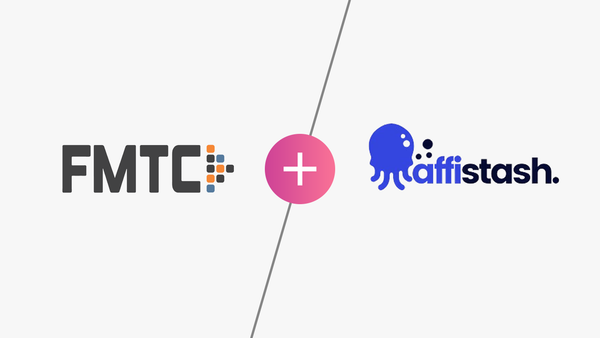Awin’s Conversion Protection Initiative (CPI) is set to bring major changes to tracking accuracy in the affiliate space.
With the deadline fast approaching, CEO Adam Ross shares the latest on advertiser adoption, industry reactions, and the tangible impact of the CPI so far.
He also addresses the challenges some brands have faced, pushback from other networks, and why Awin remains committed to raising tracking standards across the industry.
Sol Wilkinson: How has advertiser adoption of CPI progressed since its announcement?
Adam Ross: I'll give you a pretty comprehensive update.
We have 30,000 advertisers on the Awin platform globally, and about 5,000 of those (17%) were identified as not being compliant with the tracking requirements of CPI.
It’s not our entire base of advertisers because we have been driving clients towards server-to-server (S2S) for a long time. But it’s still a significant portion of 5,000 subscribers.
Since the announcement, 500 of those have successfully upgraded their tracking setups, and a further 1,500 are in the process of being upgraded.
So that's 40% of the affected base that have either upgraded their tracking or are in the process of upgrading the tracking.
We're pretty happy with that. We know that these things always accelerate as you get closer towards the deadline. We're expecting to see that happen, but we're pretty happy with the number of those that have upgraded and the quality of those. So, that's where we're at today.
SW: Are you confident that the 1,500 who are upgrading are going to meet the deadline?
AR: Yes. Absolutely. They (the 1,500) will meet the deadline. I think there are definitely going to be some that don't, but that was to be expected.
SW: So, there's 60% remaining who have not yet started to update their tracking.
AR: Exactly. Yeah.
SW: The ones who have implemented it so far, moving over to S2S, have they faced any challenges? Is there anything that you've noticed has come up quite a lot – areas in which Awin has had to support them?
AR: Nothing unusual because we have a lot of experience already doing this. There's the general stuff – fitting in a development queue and having the tech teams on the advertiser side understand it. If they haven't put any effort into it or tried to understand it before, there's some educating to do.
But we've always been confident that as soon as we get it in front of the right people, it's actually quite straightforward to do.
There's just never been enough drive and impetus to make it happen. We need to keep getting the message out there and keep getting it in front of the people who can implement it.
SW: And for the 10% who have moved over already, do you have any early data on how the CPI has been improving conversion tracking and affiliate payouts?
AR: We do. The advertisers that have upgraded their tracking across both the app and the S2S setups generated more than 600,000 sales, and that's been worth about $60 million in revenue. We think it's led to more than $3.5 million in affiliate commissions being correctly awarded. We're pretty sure that, had these upgrades not happened, this money simply wouldn't have gone to affiliates.
SW: Do you know what this number is increasing from?
AR: The figure relates to sales that would've likely gone unrecorded in the affiliate channel without the upgrade in tracking (whether S2S or app). So, in terms of an increase it's essentially from zero as far as the channel is concerned.
SW: In addition to these numbers, have you received any feedback from advertisers and publishers on how this process has gone?
AR: Yes. We've had lots of good conversations. From the publisher market, as you can imagine, a ton of very positive feedback across the board and a lot of support.
Initially, some advertisers didn't quite understand it and needed to have it explained further. But once those explanations were in place, everyone has been quite supportive. Even the advertisers.
I think they know that this has been a problem, and they also want more accurate tracking and better attribution. They want to make better budget allocation decisions.
Obviously, there's also a cost implication that needs to be factored in, and that requires careful planning, but the support's been good. So, even from people that were initially concerned, we've been able to talk them around.
I can give you some examples of advertisers that have made the change and the performance that they've seen.
We had one advertiser in the pet sector. They implemented app attribution in November last year, and in the first three months after that upgrade, we saw a 35% increase in incremental sales from the app that would previously have gone completely unrecorded.
So, there's some extraordinary performance that we're seeing from the upgrades, which is excellent.
We had a globally recognised brand in the footwear and sportswear sector that implemented app attribution in May 2024. That was before the announcement. They wanted to better reward influencer and content affiliate performance partners, and if we compare their performance from May to December of the previous year, where they didn't have any app attribution, we saw a 74% increase in sales and a 26% rise in revenue from its influencer and content partnerships.
SW: Terrific. I suppose the hope is that the more these successes come to light and as the word gets around, the remaining advertisers who haven't yet switched over will see this and be encouraged to do it.
AR: I think so. The passing of the deadline should help as well because they're going to see probabilistic sales added to their accounts, and that's going to spark more conversation and interest. As we've said very clearly from the start, the desire is to use as little probabilistic tracking as we possibly can on programmes.
SW: Have you made any adjustments to the initiative since its launch? For example, are you planning on extending the deadline at all?
AR: No, no, no. We haven't had to make any changes. We're not going to be extending the deadline.
We've had lots of interesting conversations about how to position it as effectively as possible so that everybody understands it.
I think another interesting part of our discussions has been around raising standards. It shouldn't just be isolated to tracking.
We need to ensure that quality and value are being delivered from the market, and advertisers need to be reassured about quality and value.
SW: Do you think that the CPI could pave the way for industry-wide tracking reform, even beyond what Awin is doing?
AR: Our intention here is really a noble one: improving standards and setting what we consider to be base-level fundamentals.
This is not just about creating fairness for publishers. We really believe that this is going to allow much smarter budget allocation decisions for advertisers over the long term.
Even if there's an initial shock, as costs go up more than planned, we think that over the long term, as advertisers see fair value and accurate attribution of sales, this is going to enable them to divert funds from other channels back into affiliate.
In a broader industry where we're competing for budget with Google and Meta, squabbling amongst ourselves doesn't make any sense.
We need to set the standard, raise the bar, and then compete from a fair point. That's the goal of this.
SW: I don't know if you saw James Little's recent LinkedIn post. He was talking about how some networks and platforms – he didn't name names – are using the CPI's associated costs as a way to poach advertisers.
Were you expecting this kind of response? And what's your take on it?
AR: We hoped not. But I can't say I'm hugely surprised.
When we came up with the CPI, we thought about whether they would do this.
I always thought that it would be a very tricky sell – a strange sell to say, “Come with us. Track less with us. It'll be somehow better for you.” I find that tricky positioning.
I don't know how they actually approach it in the conversations, but a lot of this stuff gets reported back to us, and I think that speaks volumes as well.
If this was a successful approach, then clients wouldn't come and tell us about it.
Look, people can sell if they think they have better quality tracking systems or technology, and I think that's fair game.
But saying that the CPI is going to cost you more and, therefore, you should come with us seems to be a strange thing to do for the industry. It's disappointing.
SW: Have any networks gotten in touch to say that what you’re doing is a good thing for the industry? Maybe they’re feeling encouraged to do something similar or collaborate in some way?
AR: Yes, a couple of smaller networks.
TimeOne in France.
Admitad has effectively replicated it and mentioned that to us, which is great.
There are a few that have been quietly supportive without having done anything themselves. I don't anticipate that it's those networks that are using this as a sales approach.
Maybe some are waiting to see what happens before they make a move.
But I hope they'll see now, as the results start to emerge, that this just makes sense. Even if they want to come up with slightly different ways to approach it, I think that the principle should be upheld by the industry. And I hope it will be.
SW: So, there is 60% left of that initial portion that needs to upgrade.
Are you confident that any of them will transition to S2S by the deadline or shortly after it? Do you know how you’re going to get them over the line?
AR: I think some will. We'll make a dent into that base over the coming weeks.
Approaching deadlines always seem to encourage action, even if people have plenty of time before. The teams are poised and ready to support an influx of new upgrades as we approach the deadline.
But there are only a few days left. So, I think making a big dent in that is going to be challenging. I think we'll probably see that continue after the deadline.
We'll be relentless until we get the whole base using the new tracking.
SW: For those who don't meet the deadline, what kind of effect is probabilistic tracking going to have on advertisers and affiliates?
AR: I think it's going to be unusual. It's going to be different for the industry. It’s going to spark lots of debate, which I think is needed and helpful.
This is necessary for those who, for whatever reason, can't do the work to upgrade.
The option to improve tracking is always available to everybody. I think this is something that's going to keep the conversation alive and keep things fair in the meantime.
SW: Final question. What would you say to advertisers who are hesitant about adopting S2S tracking due to the perceived cost increases?
AR: What we need to very clearly explain to everybody is that this is not a cost increase.
This is about ensuring activity is accurately tracked. The cost is a different story. You can't even have a conversation around cost and return from a position of inaccuracy.
S2S tracking will help us arrive at a better position of accuracy. From that point, you can make all sorts of smart and sensible budget decisions. I personally believe that making those decisions without the insight and the accuracy is quite dangerous. It should be avoided.









